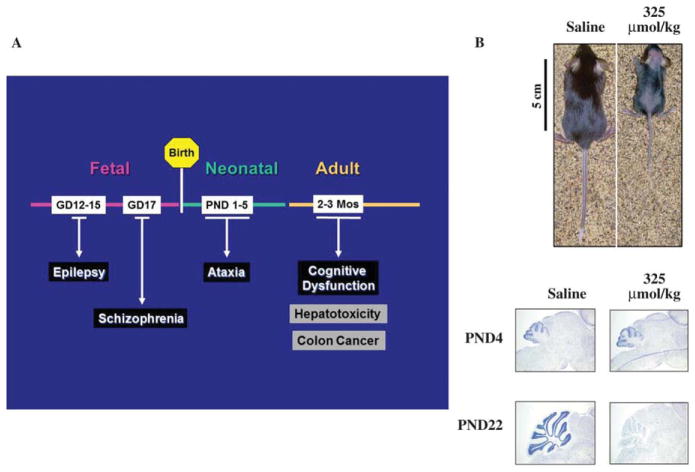Figure 3.
Effect of MAM on rodent brain development. (A) Intrauterine exposure to a single injection of MAM produces an animal model with neuroanatomical and neurobehavioral features of drug-resistant epilepsy or schizophrenia. After birth, neonatal or adult rodents that have been treated with single or multiple injections of MAM develop motor dysfunction (i.e., ataxia) or cognitive dysfunction, respectively. Adult rodents that have been treated with azoxymethane (metabolic precursor of MAM) daily for several weeks also develop hepatotoxicity or colon cancer. (B) Growth of neonatal (PND22) mice after treatment on postnatal day 3 with a single injection of saline or MAM (325 μmol/kg; top). Note the pronounced effect of the cycad genotoxin on development. Light micrographs of representative areas from cresyl violet stained parasaggittal sections (10 μm) of the cerebellum from postnatal day 4 (PND4) and 22 (PND22) C57BL/6 mice pups similarly treated at PND3 with either saline or MAM (bottom). Note that the staining in the granule cell layer is significantly reduced (cerebellar atrophy) only in PND22 mice. [modified from (Kisby et al., 2009)]

